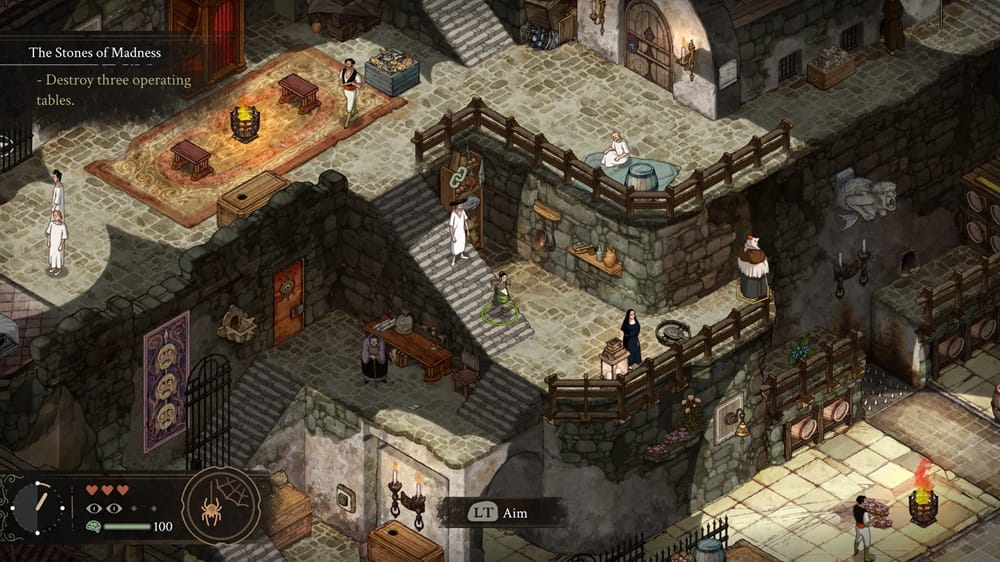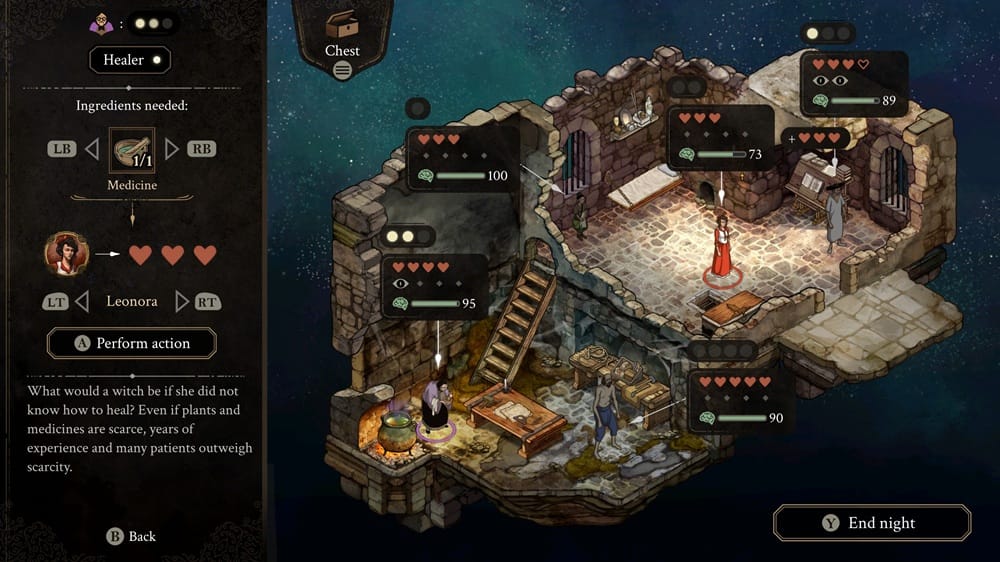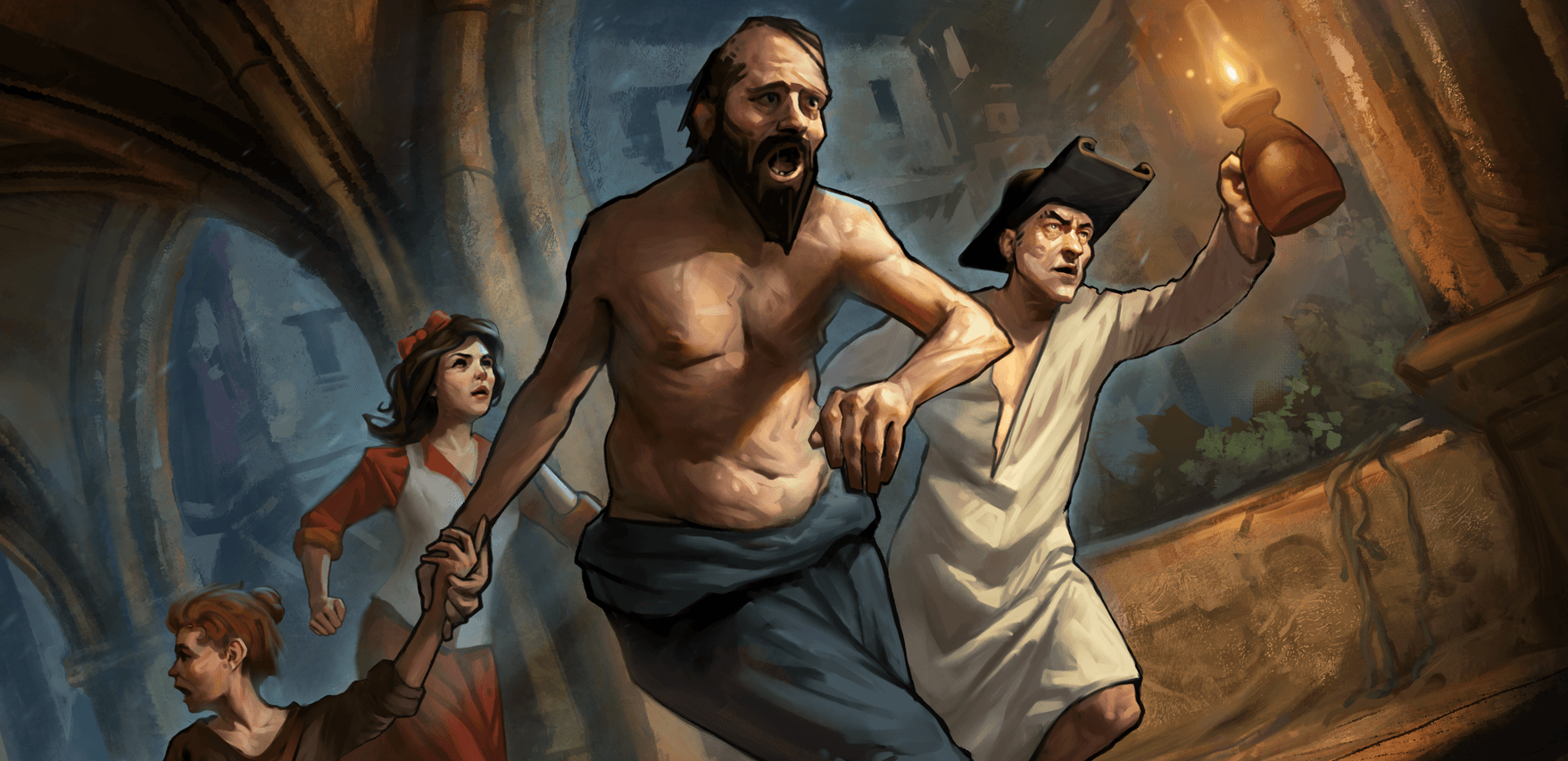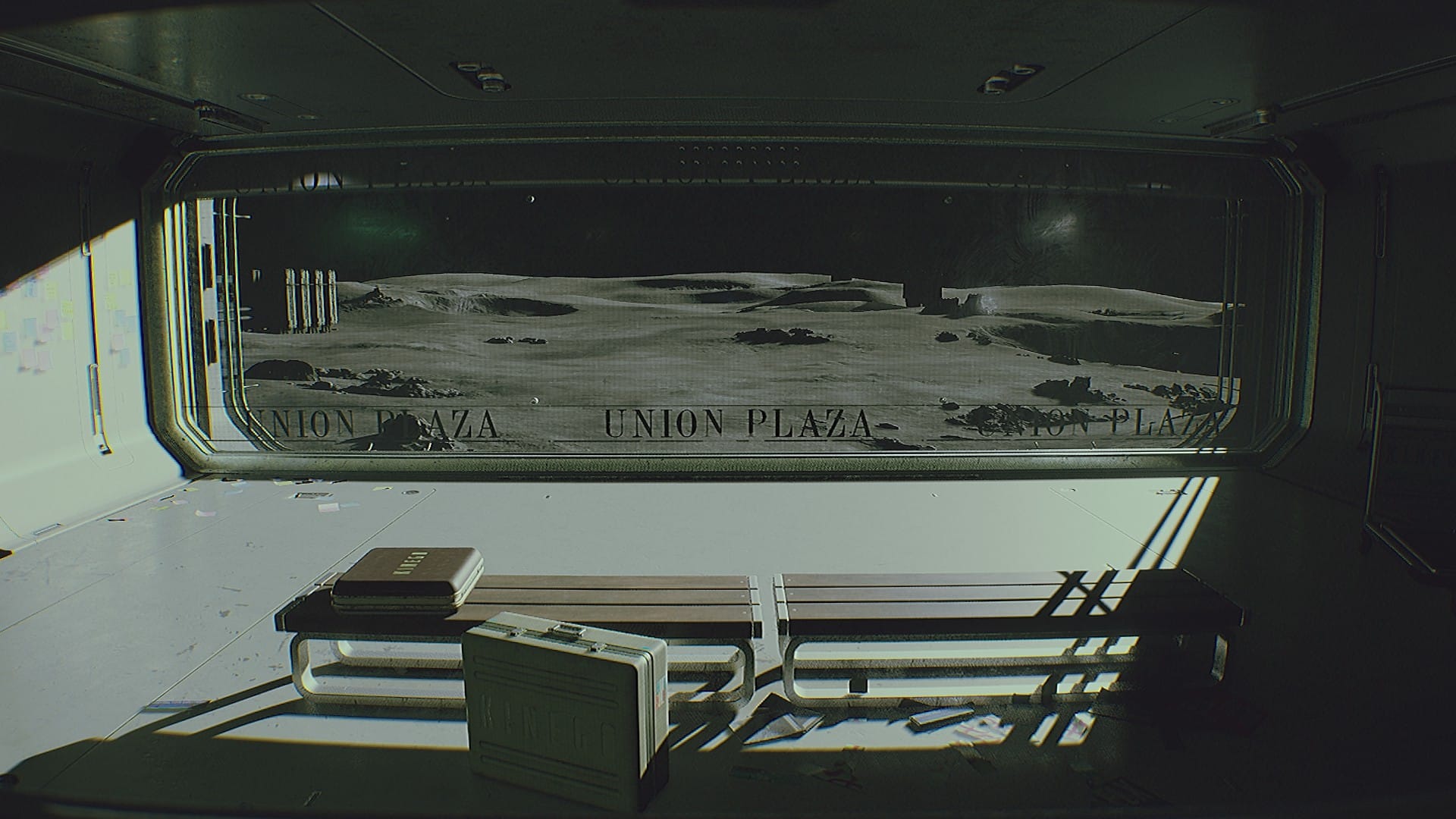Into the fertile, thriving arena of tactics games come The Game Kitchen, the developers of Blasphemous and Blasphemous 2. The Stone of Madness is their fresh, distinctive and unusual take on real-time tactics games, one which is fascinating despite a number of frustrating and often needless flaws.
For this project, the Game Kitchen team have drawn on a hallowed classic from their country’s gaming history. Released in 1987, La Abadia del Crimen (The Abbey of Crime), was a product of Spain’s 1980s “golden age” of videogames and software. An unlicensed adaptation of Umberto Eco’s novel The Name of the Rose, the game was developed by the short-lived outfit Opera Soft and never officially released outside Spain.
The Stone of Madness preserves the monastery setting of these earlier works, and continues the Game Kitchen’s fascination with the ideas and aesthetics of Spanish Catholicism. Specifically, the game is set in 1799, in a monastery-turned-asylum nestled in the Pyrenees. With its abbot in declining health, the site is increasingly controlled by a sinister inquisitor who conducts cruel experiments on the mentally ill inmates. This novel setting is rendered in quite beautiful isometric scenes, heavily inspired by the art of Francisco Goya.

The monastery has many secret ways and hidden secrets, some essential to success and others not
Bent on putting a stop to these atrocities is a rag-tag group of heroes, all inmates themselves. Father Alfredo Martín is a priest who arrived as a visitor and became a prisoner. Eduardo is a physically formidable mute, Leonora is a fiery noblewoman, Agnes is an aged witch, and Amelia is an agile young girl. They must work together to unravel the mystery, using and combining their particular skills.
At first glance, The Stone of Madness resembles the real-time stealth tactics games developed by Mimimi, and their various derivatives. Certainly there are strong similarities. The monastery is patrolled by guards with viewable vision cones, and these thugs can be knocked out or killed, their bodies hidden in convenient containers. Alfredo can don a priest’s uniform, and pass freely through many areas – a time-honoured skill going back to the Spy in the original Commandos (also developed, of course, in Spain).
It very quickly becomes clear that The Stone of Madness is in fact a highly unique proposition. This is a much more intimate game than those made by Pyro, Spellbound, or Mimimi. There are no discrete missions taking place in sprawling locales, but rather two distinct campaigns which unfold fully within the fairly cramped confines of the monastery. Gameplay occurs in two distinct phases. During the day, Alfredo and friends can move fairly freely unless they stray into forbidden areas. During the night, they recuperate and craft new items in the safety of their cell, which is adjoined by a hidden workshop.
Rest and relaxation are crucial, because the protagonists are all frail and damaged in their own ways. Each of them has a weakness, exposure to which erodes their precious sanity. Should this sanity fail, they will acquire new debilitating hang-ups. Leonora, for example, has a desperate fear of fire. If she is exposed for too long to the sight of blazing braziers, she might acquire a powerful aversion to nuns, who prowl the halls and whom she blames for her imprisonment.

Night-time activities in the cell offer relief from the high tension of daytime stealth
Cleverly, the characters can help each other to avoid their fears. One of Agnes’ spells allows her to unleash a swarm of flies, which can consume the corpses that Alfedo is afraid of. More generally, Agnes is the outlier – while essentially fearless, her spells actually consume her treasured grip on sanity. Playing with Amelia, listening to Leonora play violin, or consuming chocolate provided by Alfredo can help everyone get back on an even keel.
Cooperation between characters is critical for achieving the broadly linear sequence of objectives needed to succeed – any one character is capable of relatively little alone. For example, Alfredo can deliver a rousing sermon to district two guards while Leonora or Eduardo eliminate a third, opening the way for Amelia to slip behind the bars of a gate blocking the way. Unravelling the secrets, challenges, and many hidden ways of the monastery is compelling, especially with these likeable and capable characters and their distinctive sets of skills.
A number of frustrating aspects frequently hamper The Stone of Madness, however. Some key objectives are overly opaque, and it can be confusing to establish what to do next. This can result in wasting precious time, resources, and sanity on wild goose chases. When suspicion on the team rises, security is increased and this is more annoying than it should be. Occasionally, mantraps are placed in locations where they can become briefly obscured by walls. Unable to see them, the player can have a character blunder into these, take a ton of damage, and ruin the day’s efforts in a second.
In a weird oversight, only one character at a time can be moved between zones. This makes transition between areas into a time-consuming chore, and is surely due to the patched. More significantly, some of the dialogue seems to have become mangled in translation from Spanish, which both adds to the confusion and undermines the story and themes. The Game Kitchen have devised an intriguing world here, one rooted in genuine and unsettling beliefs from the past, but their writing does not always serve it well.
The Stone of Madness is an intriguing new direction for The Game Kitchen. While it has its frustrations, it surpasses its superficial similarity to other games to strike out in a unique direction of its own. If the studio can iron out some of the remaining issues, it may become essential.





